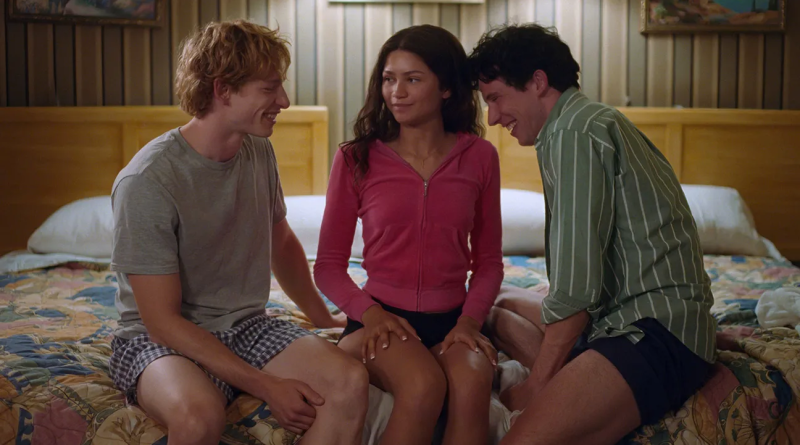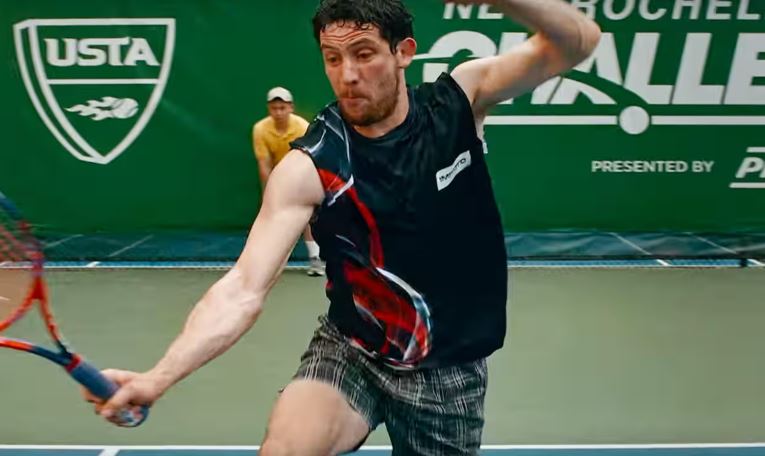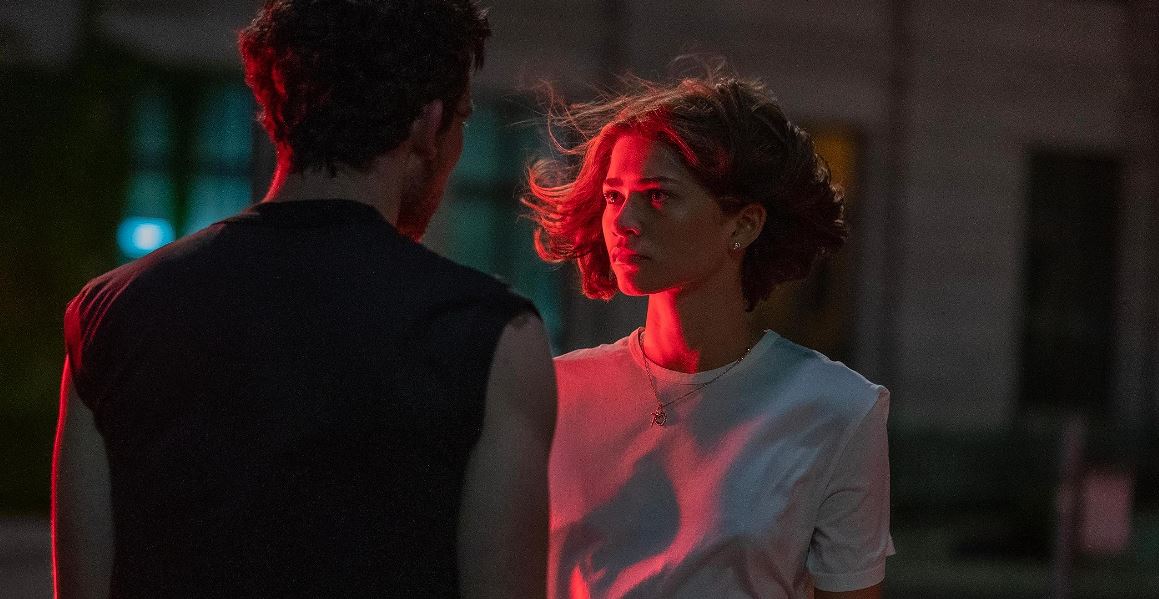Luca Guadagnino hasn’t always been an easy director to pin down, but his films seem to share something in common, which is that they all come from a place of feeling significant. If that sense isn’t there in the subject matter, as it is with a film like Call Me By Your Name, then it’s there in the treatment of that subject matter, such as his 152-minute remake of Dario Argento’s 99-minute Suspiria. Whether you always believe in the final product, you always believe Guadagnino believes in it.
Challengers is the first movie he’s made that seems to exist primarily for frivolous reasons, and that creates a palpable sense of disappointment even while being quite well made. It’s a tennis love triangle that plays out over 13 years told in non-chronological order, and its distended 131 minutes suggest an artist attempting to paint on the same size canvas that he’s used previously. At the end of the day, though, it screams out “thirst trap” as much as it screams out anything, as there is almost a prurient fascination here with abs, legs, buttocks, cheekbones, and sweat dripping off all of the above in slow motion. It isn’t wrong to want to make a movie like Challengers, but it seems wrong for what we know about Guadagnino – especially when he vaingloriously slaps his own name atop the title in the end credits, where it reads “Luca Guadagnino’s Challengers.”
Most love triangles are constructed heterosexually, where two people of one gender both long after one person of the opposite. Guadagnino’s gesture toward his most acclaimed film, Call Me By Your Name, may be contained within him trying to make the third of the three potential relationships equally sexual. We meet Art Donaldson (Mike Faist) and Patrick Zweig (Josh O’Connor) in a present-day low-level challengers tournament in unheralded New Rochelle, New York, where we know they are facing each other in the grand final and we infer that there are great stakes for each despite the very different stages of their careers. We quickly learn that Art is just a U.S. Open away from a career grand slam, while Patrick is sleeping in his car before matches. Guadagnino unveils that a relationship he frequently characterises as homoerotic has dated back more like two decades, 13 years of which we get to see in some detail.
The woman the two tennis hopefuls had been fighting over as younger men, and in some ways are still fighting over, is Tashi Duncan (Zendaya), now Tashi Donaldson. The men met her when they were all teenagers and Tashi had lit the tennis world on fire, though had not yet turned pro and was still playing for Stanford, which Art also attended. We know from the start that she married and is now training Art, but we only learn over the course of the narrative what twists and turns led to that point, as we bounce – to put it in tennis terms – back and forth between the New Rochelle match and various milestones in the history of these three athletes.
Guadagnino toys with potentially fruitful topics like the drive to succeed and perseverance through injury and professional failure. But in many ways, tennis is just a backdrop for these three relationships and the way they remain or fail to remain loyal. Despite a good camaraderie between Faist and O’Connor as young men, and a chemistry they each share with Zendaya to some degree, this just doesn’t feel like enough material to drive a movie over the two-hour mark. We’re invited to consider what each character did or didn’t do at various junctures, but we’re not given enough to make choices about where to lay our sympathies. It would be enough to sympathise with all three of them, but they are shallowly enough drawn that sometimes it feels like we are enduring them more than supporting them.
And while tennis often does seem only tangentially related to what Guadagnino is trying to accomplish, there is quite a lot of tennis in this film, and that creates its own kind of disconnect. Guadagnino has imagined all sorts of new ways to film the sport, for example, setting up cameras so the ball seems to be whizzing out into the audience, almost begging for 3D. Sometimes he films from underneath a glass-bottomed court in order to get the shot he wants. It’s a vigorous engagment with the technical challenges of filming sport – we haven’t even mentioned the fullness of the sound design of the balls hitting off the racquet strings with that chunky “thwack.” When you ultimately determine it’s all basically window dressing, that’s a dispiriting conclusion.
One telling example of the simultaneous use and misuse of technical resources is the score by Trent Reznor and Atticus Ross. The duo’s typically memorable industrial-edged dance pop does a great job revealing the intensity of a particular moment in the match, or the scrambled emotional state of one of our three characters. (I’d call them “three main characters” yet there isn’t another actor in the movie who even makes an impression.) But Guadagnino starts to significantly reduce the effectiveness of the music by going to it as often as he does, sometimes bringing it in and out multiple times in the space of the same three-minute scene, sometimes even drowning out key dialogue we are definitely meant to hear. There are times when one wonders why he stopped and started the score again when it would have been easier just to let it play through.
If we are to set aside what Guadagnino thinks this movie means – and some of his conclusions in the finale, not to mention the staging of those conclusions, are a bit dubious – we are still left with a very watchable piece of filmmaking with some very watchable stars. If Challengers is just a “thirst trap,” it’s got all the materials to be a good one, and that would be enough reason for a lesser filmmaker to make the movie. It’s not enough reason for a director like Guadagnino, who is on the cusp of the A list, and that inevitably puts a ceiling on his fans’ ability to be satisfied with it.
Challengers is currently playing in cinemas.


